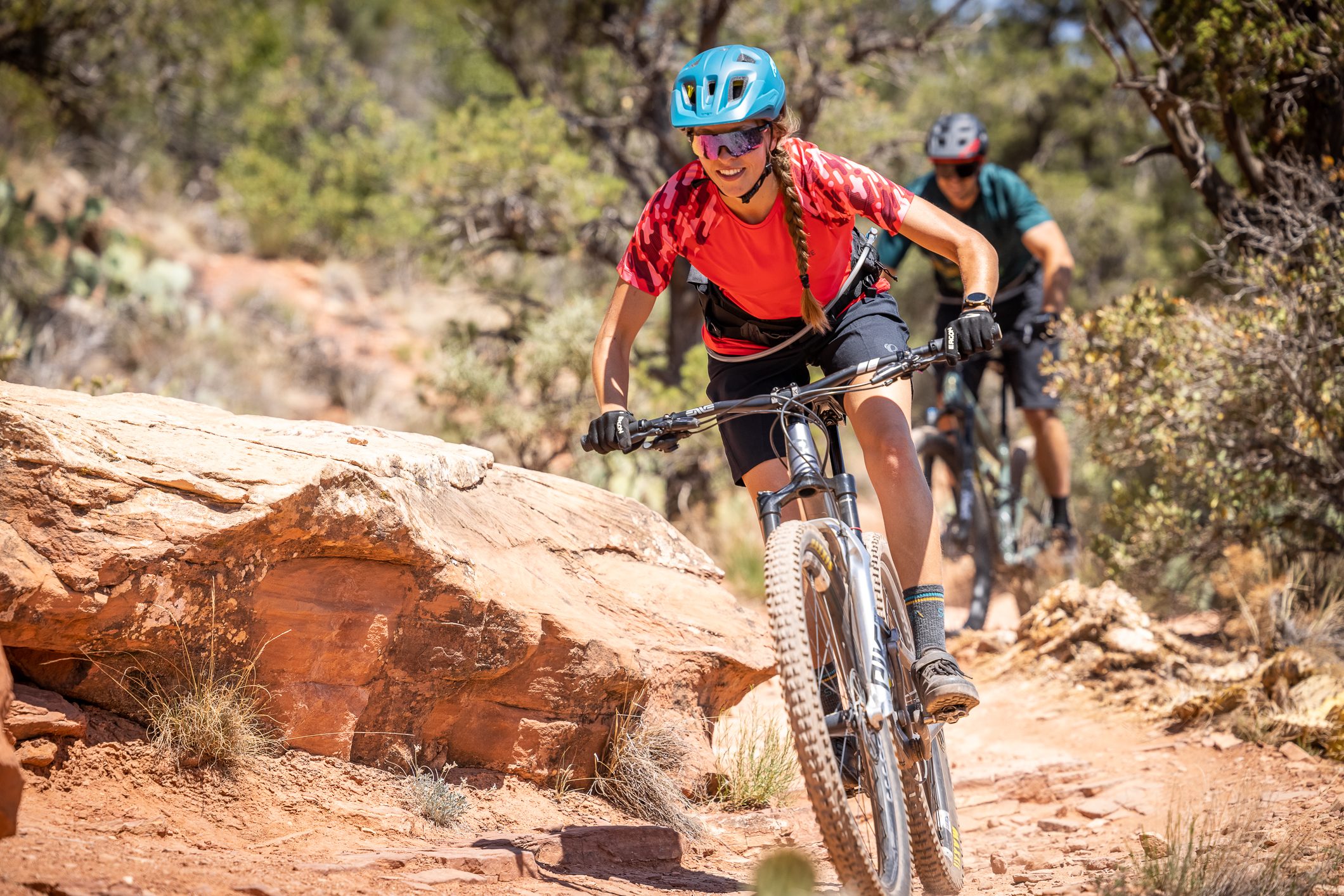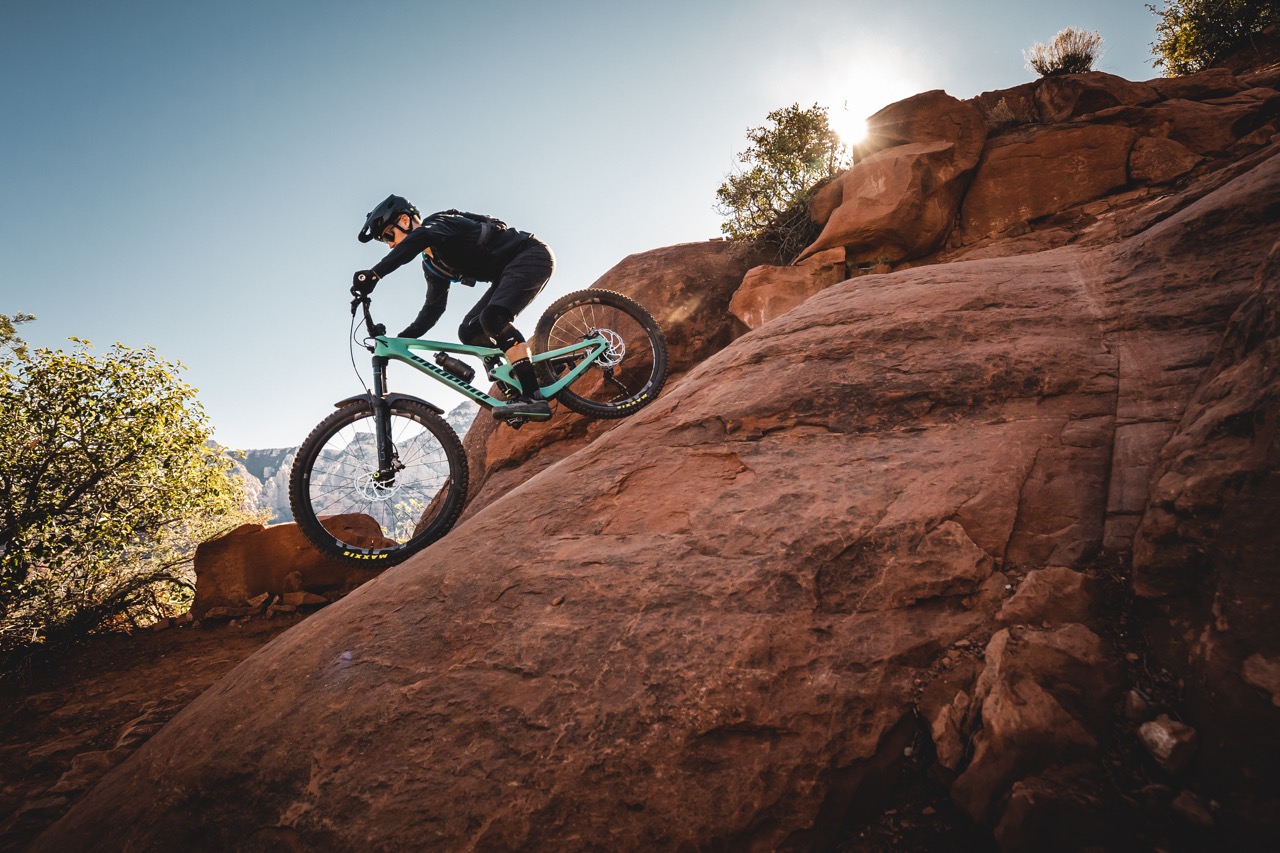Arm Pump on the Mountain Bike – Symptoms, Causes, and Solutions

Arm pump can ruin your Mountain Bike ride with pain in your forearms and loss of grip strength. We explain how to prevent arm pump.
Arm Pump on the Mountain Bike – Symptoms, Causes, and Solutions
You know the problem: you're flying down the trail like a MTB god, but just a few minutes into the descent, your hands and forearms start to burn, and soon your grip strength is so poor that you can barely hold the handlebars. This pain and loss of strength has a name that every MTB rider knows: arm pump.
Arm pump is one of the most common injuries on the mountain bike, alongside crash injuries – and it is often misunderstood. In this article, we explain what arm pump is, what consequences it can have, and how you can counteract it.
MTB Arm Pump – What Is It?
Arm pump describes a series of symptoms that occur during intense descents (whether in enduro, downhill, or other cycling discipline). These arise when the pressure of the muscles in the forearm area negatively affects blood flow. During the descent, there is often no opportunity to relax the muscles and thus reduce the pressure. The anatomy of the forearm also complicates the situation. The muscles are surrounded by a strong connective tissue, the fascia, which has only limited elasticity, making it difficult for the forearm muscles to expand during rapid, intense activity, thereby promoting pressure buildup.

Arm Pump on the Mountain Bike – Symptoms
How exactly does arm pump manifest? The most common symptoms include pain in the forearm muscles and fingers, which can extend to the elbow and the entire arm. There is also a feeling of tightness or hardness in the forearms, cramps, swelling, and numbness, as well as significantly weakened grip strength up to the loss of control over the hand. Fortunately, these symptoms quickly subside if you give the muscles rest. However, if the symptoms persist and are not treated, arm pump can lead to Chronic Exertional Compartment Syndrome (CECS), which can cause much more severe damage, such as circulatory disorders or necrosis.
Now that you know what arm pump is, the question remains what you can do about it. Fortunately, there are several measures you can take to reduce or even prevent arm pump.
Preventing Arm Pump on the MTB – Know Your Limits
If you spend the whole day riding descent after descent in the bike park without preparatory training, your body will struggle to keep up. If you overdo it and ride too long without breaks, arm pump is inevitable. Your body needs time to get used to the extreme conditions of the tougher trails and to adapt to the changed riding habits. Jumping into the deep end unprepared is therefore not a good idea. Start with routes where you need to brake less and take fewer hits. Take enough breaks and gradually work your way up to the more demanding routes.

Preventing Arm Pump on the MTB – Upper Body Strength
Even if it is not immediately apparent, a good amount of upper body strength helps keep potential arm pump in check. Stable wrists and building more upper body and grip strength can help you better withstand the stresses of demanding trails at high speeds. Cross-training exercises are well-suited to achieve optimal results. Other accompanying sports, such as bouldering, are also perfect for increasing upper body strength while simultaneously training your back, arms, shoulders, wrists, and grip strength. You can, of course, also spend time in the gym or create your own training program at home if you have the necessary knowledge. Please note that training only helps if you pay attention to regular stretching and mobility training. Otherwise, the tension in the fascia will tend to increase rather than decrease.
Avoiding Arm Pump on the MTB – Your Setup
The setup of your bike can also help reduce arm pump and improve control over your bike. The following measures can help:
- Brake Lever Setup: The angle of your brake levers can have a significant impact on the strain on your hands and forearms while riding. Especially on steep trails, a steep angle of the brake levers can quickly lead to strain. It is also important to consider the breakaway torque of the brake levers. If you need a lot of force to get the pads to contact the discs, you will tend to get arm pump faster. Another point: the more force you need to apply when braking, the more pressure builds up in your forearms. If you set your brake levers so that they are close to the handlebars, you don't have to stretch to reach them, requiring less force when braking.
- Brake Size: If you find that you frequently have to lock the wheels completely during the descent to keep the bike under control, it makes sense to increase the performance of the brakes by installing larger disc brake rotors.
- The Right Grips: A secure grip, sufficient cushioning, and the right size grip diameter not only increase comfort but also allow you to control the bike with less effort, reducing arm pump. Ergon offers a wide range of arm pump relieving grips. Here you will find the perfect fit for you and your riding style. If you are unsure, you can also use our Grip Selector.
- Minimizing Vibrations: The vibrations that occur during extreme descents significantly contribute to the overuse of the forearms. Therefore, make sure that your mountain bike absorbs vibrations and shocks as well as possible. To do this, you should adjust your suspension and tire pressure so that as many vibrations as possible are absorbed by your bike. The rest can be absorbed to a good extent by the correct gloves and grips specifically designed for this purpose, such as the Ergon GDH Team.
- The Right Riding Position: A good riding position prevents fatigue and ensures balanced weight distribution. The Ergon MTB Fitting Box also helps you precisely adjust your bike, from the saddle to the handlebars and cockpit, including the brake levers.
Reducing Arm Pump on the MTB – Riding Technique
Lastly, there are also some techniques that can help you prevent arm pump. Here are some tips for good riding technique:
- Light Hands, Heavy Feet: Lower your heels and shift your weight onto the pedals to take unnecessary pressure off your hands.
- Brake Discipline: Braking puts a lot of strain on your forearm muscles. Therefore, brake deliberately and ensure relaxed and precise operation of the levers.
- Relax When Possible: Use less demanding sections of the trail (if available) to loosen your grip a bit. This helps reduce the strain on your hands and forearms.
Conclusion – Arm Pump on the MTB Doesn't Have to Be
Now you have an overview of how to effectively prevent arm pump. With the correct setup, some training, and a bit of respect for the trails, you'll quickly get the annoying arm pump under control. If you still have problems despite all precautions, or if the symptoms are slow to subside or do not subside at all, you should seek medical advice to rule out undiagnosed pre-existing conditions or injuries and to avoid more serious health consequences.